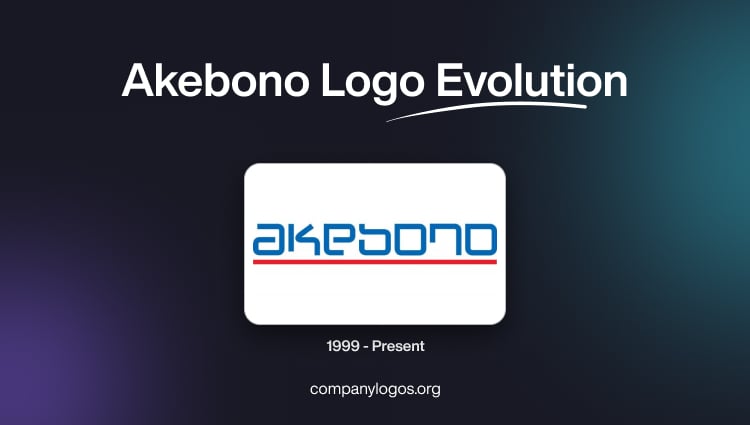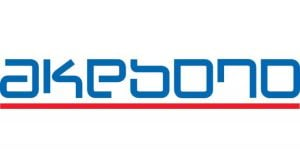
The Japanese company Akebono Brake Industry Co., Ltd. is known all over the world for producing top-quality braking systems for the automobile industry. Its clientele is the who’s who of the automobile industry, such as Audi, General Motors, Honda, Ford, Toyota, Chrysler, Volkswagen, and others. It also produces ancillary components for the automobile, motorcycle, railway, and industrial machinery sectors. Founded in 1929 by Sanji Osame, the company has become a premier name in the auto braking industry and has a presence in several countries, such as Japan, the US, China, France, and the Slovak Republic.
This braking giant has a visual identity in the form of a logo that reflects both its rich heritage and its forward-thinking approach. In fact, the meaning behind the brand name itself, “dawn” in Japanese, hints at the desire of the company to be a leader in braking technology. This article delves into the history of this attractive logo, among other details.
The Genesis of the Akebono Logo (1929 and beyond)
There isn’t much information available on the logo used by Akebono in its formative years. This could be due to the fact that the focus of the company was on establishing itself in the market during that period.
(1999 – Present)
When it comes to the logo, a significant shift came in 1999, when Akebono celebrated its 70th anniversary. It was during that year that Akebono established its mission statement. The company felt the need to build a new foundation to usher in the future of the group and embarked on a period of transformation. So, in addition to establishing a new corporate mission statement and a declaration outlining the values of the company for the 21st century, Akebono unveiled a new logo.
This new logo featured the brand name “AKEBONO” in a bold and block style of lettering. In fact, the letters themselves had a unique design that resembled a broken or fragmented form. This reminded people of the Japanese style of writing. The colour scheme of the logo was a deep azure blue to symbolise trust, calmness, and reliability. The wordmark or inscription was underlined by a striking scarlet-red stripe. Here, the red stripe could represent passion, innovation, and the commitment of the company to excellence.
The letters of the wordmark appear like a complex maze of wires or tubes. This symbolised the focus of the company on producing various types of braking systems for both two-wheelers and four-wheelers. Interestingly, the initial version of this logo also included the words “BRAKE EXPERTS,” written in a much smaller font below the red stripe. However, this tagline seems to have been phased out over time. Now, the sole element of the logo includes the clean and impactful wordmark featuring the brand name.
The official explanation for the design of the logo emphasises the concept of vastness. In fact, the broken letters of the wordmark “AKEBONO” could be seen to represent the limitless potential and opportunities the company offers in the braking industry. The current logo, with its simple yet powerful design, can be identified with the reputation of Akebono for quality and performance. It effectively conveys the message of the brand as a leader in braking technology. The logo evokes a feeling of the company being ready to face the challenges of the new millennium.

The Elements of the Akebono Logo
Font
The wordmark features the brand name “AKEBONO” in bold as well as broken letters. Resembling the Japanese style of writing, the wordmark resembles a maze of tubes or wires. The logotype symbolised the characteristics of automobiles that use Akebono products, such as excellent vibration and noise, and trusted high-speed braking.
Colour
Azure blue and scarlet red are the two colours that adorn the Akebono logo. The wordmark itself is marked in azure blue to show a sense of reliability, trust, and calmness. The scarlet red line below the wordmark emphasises the brand name “Akebono” as being highly reliable when it comes to the brakes.
The History of Akebono
Akebono Brake Industry Co., Ltd. is a premier Japanese company known for manufacturing top-quality braking systems (and other equipment) for the automobile industry. Established in 1929 by Sanji Osame, the company looked after the ground transportation needs of the Imperial Japanese Army. However, for more than ninety years, Akebono has made a reputation for manufacturing high-quality braking systems for a range of vehicles, including cars and motorcycles. Based in Hanyu City, Saitama Prefecture, Japan, the company has consistently focused on innovation and excellence since its founding.
The groundbreaking journey of Akebono started in 1937, when it became the first manufacturer of disc brakes in Japan. The innovative quality of these disc brakes was highlighted when they were installed on the Kodama high-speed trains of the Japanese National Railways. Initially, the success of Akebono was more modest as it began manufacturing brake pads for bicycles. This had set the stage for the future growth of the company.
In the 1960s, Akebono marked a significant milestone in its corporate journey by becoming the first Japanese firm to export its products to the United States. This move was strategic, as American automakers quickly adopted Akebono’s disc brakes. Thus, Akebono became a key supplier of braking systems in the U.S. market. Today, Akebono stands as a global leader in the brake industry. It has manufacturing facilities spread across Japan, the United States, Mexico, China, and Thailand. Most importantly, its products are trusted by leading automobile manufacturers such as Toyota, Honda, Nissan, General Motors, and Ford.
It should be noted that the steadfast dedication of the company to research and development led to numerous innovations. For instance, in 1999, Akebono introduced the world’s first piston-type disc brake to the automotive industry. This innovation enhanced the braking performance of automobiles and made it an essential component for many major automakers. Additionally, Akebono has been a pioneer in developing brake control technology. It introduced a unique brake-by-wire system that uses electronic signals instead of traditional mechanical brakes, thereby offering numerous benefits to drivers worldwide.
The reputation of Akebono for producing high-quality, innovative, and efficient braking systems makes it a top supplier of such systems in the automotive industry. Further, the company’s adherence to safety measures ensures its braking systems provide the highest level of protection for both drivers and passengers.
Interesting Facts About Akebono
- Akebono was founded in 1929 by Sanji Osame in Japan. It initially produced brake linings for the military and early vehicles.
- The name “Akebono” means “dawn” in Japanese; it was inspired by Osame’s memories of watching the sunrise over the Seto Inland Sea near his hometown in Okayama Prefecture.
- Akebono introduced wear-resistant resin brake shoes and disc brake linings in the late 1950s. These were used by Japanese National Railways on the famous Kodama express trains.
- It was one of the first Japanese companies to enter technical partnerships with global firms, especially signing an agreement with Bendix Corporation (USA) in 1960. This led to improved drum brakes and brake linings.
- The company is known for pioneering advanced solutions in noise, vibration, and harshness (NVH) for vehicle braking. It maintained high quality and nearly zero defects across millions of parts produced.
- Akebono became a publicly traded company in 1957 and was listed on the Tokyo Stock Exchange’s second section in the early 1960s.
- Akebono operates over 30 facilities worldwide, including major R&D and manufacturing centres in Japan, the US, France, Mexico, China, Indonesia, and Vietnam.
- Its main European plant specializes in high-performance aluminium brake callipers. These serve automotive giants and racing teams, including McLaren Formula 1.
- Akebono’s operations are certified for quality (QS9000) and environmental management (ISO14001). They received numerous awards from automotive customers.
- The company employs over 9,000 people globally and reported annual worldwide sales surpassing $2.1 billion USD in 2012.
- The beauty of dawn in Akebono’s name has roots in Japanese poetry from the Heian period. Besides, the region is recognized as “the hometown of the breaking dawn” in literature.
Finally
The Akebono logo, though seemingly simple, holds a rich history and symbolism. From its unknown beginnings to the current design, it reflects the journey of the company and its dedication to being a pioneer in the field of automotive safety.